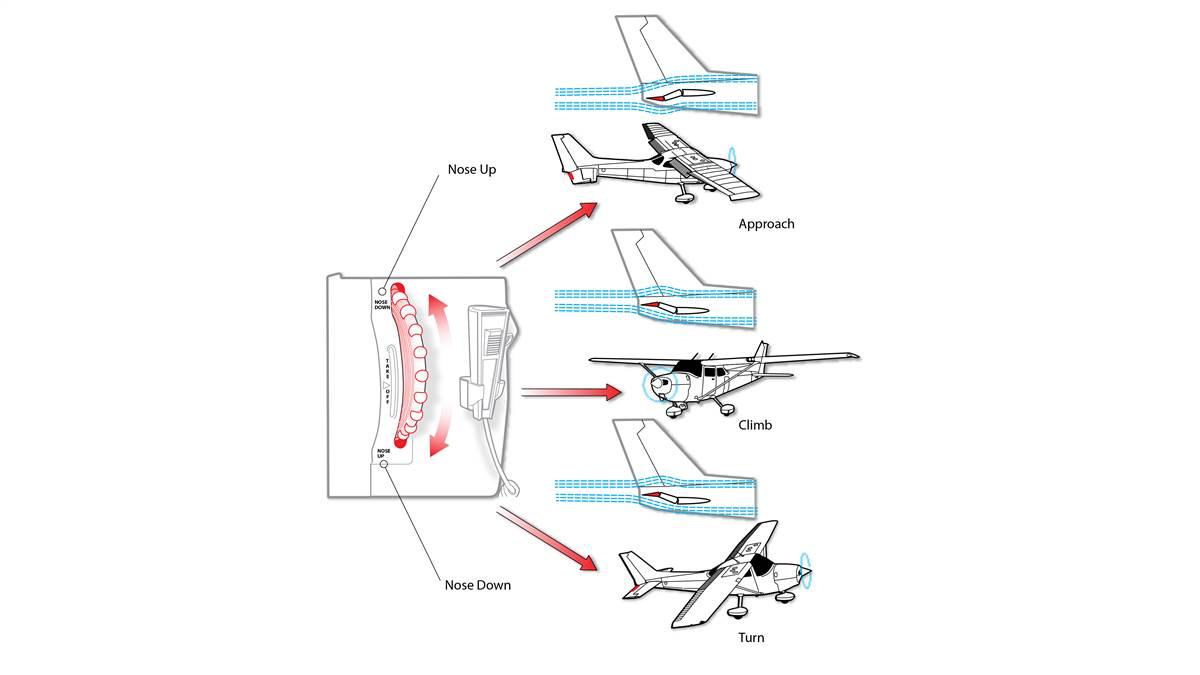
The trim tab on the elevator is used to trim away control column or stick pressure when everything else is right—that is, you have the attitude or airspeed you want.
A trim tab is a little like a Rube Goldberg device. If raised, it pushes the elevator down, the tail rises, and the nose lowers. The aircraft descends. If lowered, it pushes the elevator up, the tail lowers, and the nose rises. The aircraft climbs. But it is not a flight control.
First, make the aircraft do what you want, then trim away any forces on the flight controls that result. That’s why one of the first things you learned was to decrease power for landing but maintain level flight with increasing back-pressure until reaching the desired approach speed. At that point, trimming away pressure will maintain the speed.
In this case, pulling down on the manual trim wheel, or bringing an electric trim switch backward, will raise the nose to remove control forces and maintain the proper speed. Adding power at this point without touching the trim wheel will cause the nose to magically rise, maintaining the same speed.
For a climb, first add full power and raise or lower the nose to the proper climb speed, them trim away excess force. After allowing the airplane to accelerate to cruise speed following a climb, you’ll need increasing forward pressure on the controls as the speed increases. Set cruise power and trim away the pressure by raising the trim control wheel from the bottom to the top, as though pushing the nose down (or pushing an electric trim control forward). Now the airplane is trimmed for a faster airspeed than the one used during the climb.
Steep turns require extra back-pressure to overcome the loss of lift as the wing banks. Find the amount of pressure needed to prevent either a descent or climb and then trim away the pressure. In this case you’ll need to move the trim wheel from the top downward, as though pulling the nose up (really you are just keeping it level).



